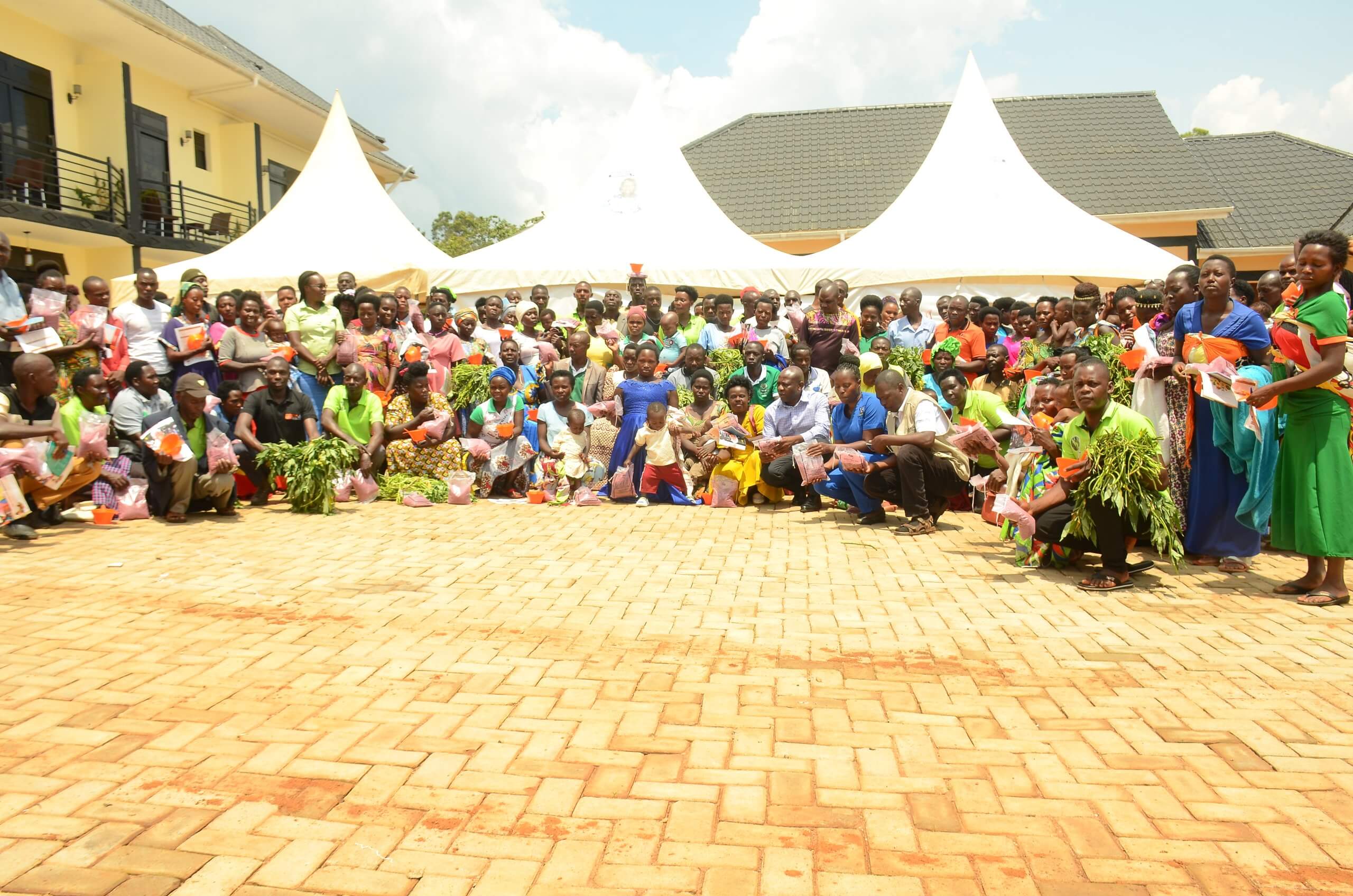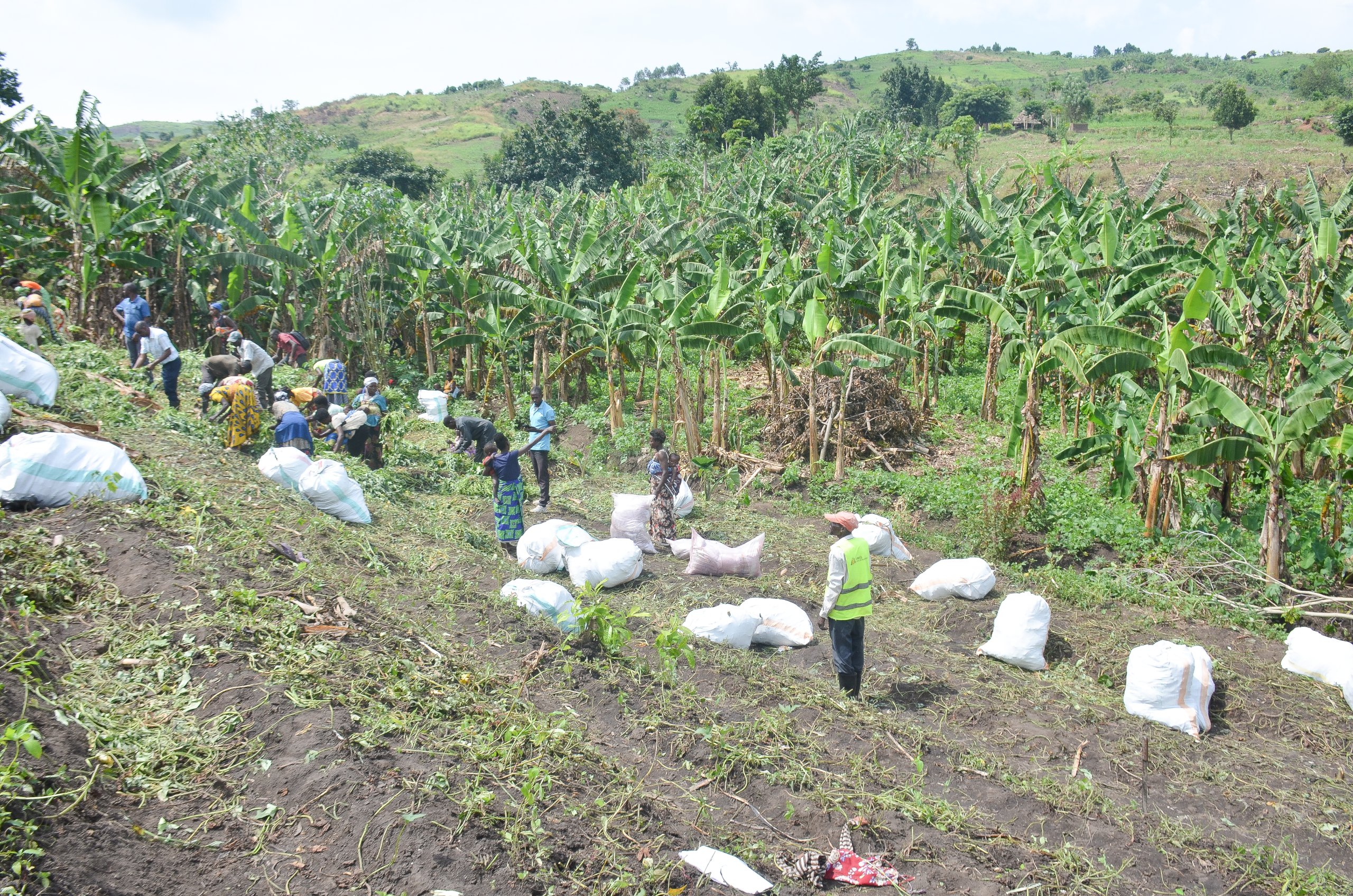Building Resilience of Livelihoods in Refugee host communities through the promotion of Biofortified crops
BY GENEVIEVE APIO
KIKUUBE, UGANDA, September 27, 2025 — The Association for Strengthening Agricultural Research in Eastern and Central Africa (ASARECA), in collaboration with the International Potato Center (CIP), CARE International, the Pan-Africa Bean Research Alliance (PABRA), the National Agricultural Research Organization (NARO), and Makerere University College of Health Sciences, successfully conducted a week-long training on the importance of biofortified crops and the scaling of their production in refugee host settlements.
The training, held from September 21–27, 2025, at the Kyangwali Refugee Settlement in Kikuube District, targeted small-scale farmers, particularly women of reproductive age, breastfeeding mothers, and community leaders—from both refugee and host communities.
The initiative sought to improve nutritional knowledge, dietary diversity, and food security through the promotion and adoption of biofortified crops, like the Orange-Fleshed Sweet Potato (OFSP) and High Iron Beans (HIB).
Setting the Stage for Nutrition-Sensitive Agriculture
Organized under the auspices of the Comprehensive Africa Agriculture Development Programme ex-Pillar IV (CAADP-XP4) and funded by the European Union (EU) through the Development Smart Innovation through Research in Agriculture (DeSIRA) initiative, the training formed part of ASARECA’s regional agenda to scale up climate-smart, gender-responsive agricultural technologies.
Other contributing programs included the Technologies for African Agriculture Transformation (TAAT) implemented by CIP, the BRAINS Project under PABRA, and the Climate Smart Agriculture Transformation Project (CSATP) of the Ministry of Agriculture, Animal Industry and Fisheries (MAAIF).
In his opening remarks, Dr. Joshua Okonya, ASARECA Agriculture and Technology Innovation Officer, noted that the intervention was aimed at addressing persistent cases of micronutrient deficiency, particularly Vitamin A and iron, among women and children in Uganda’s refugee settlements.
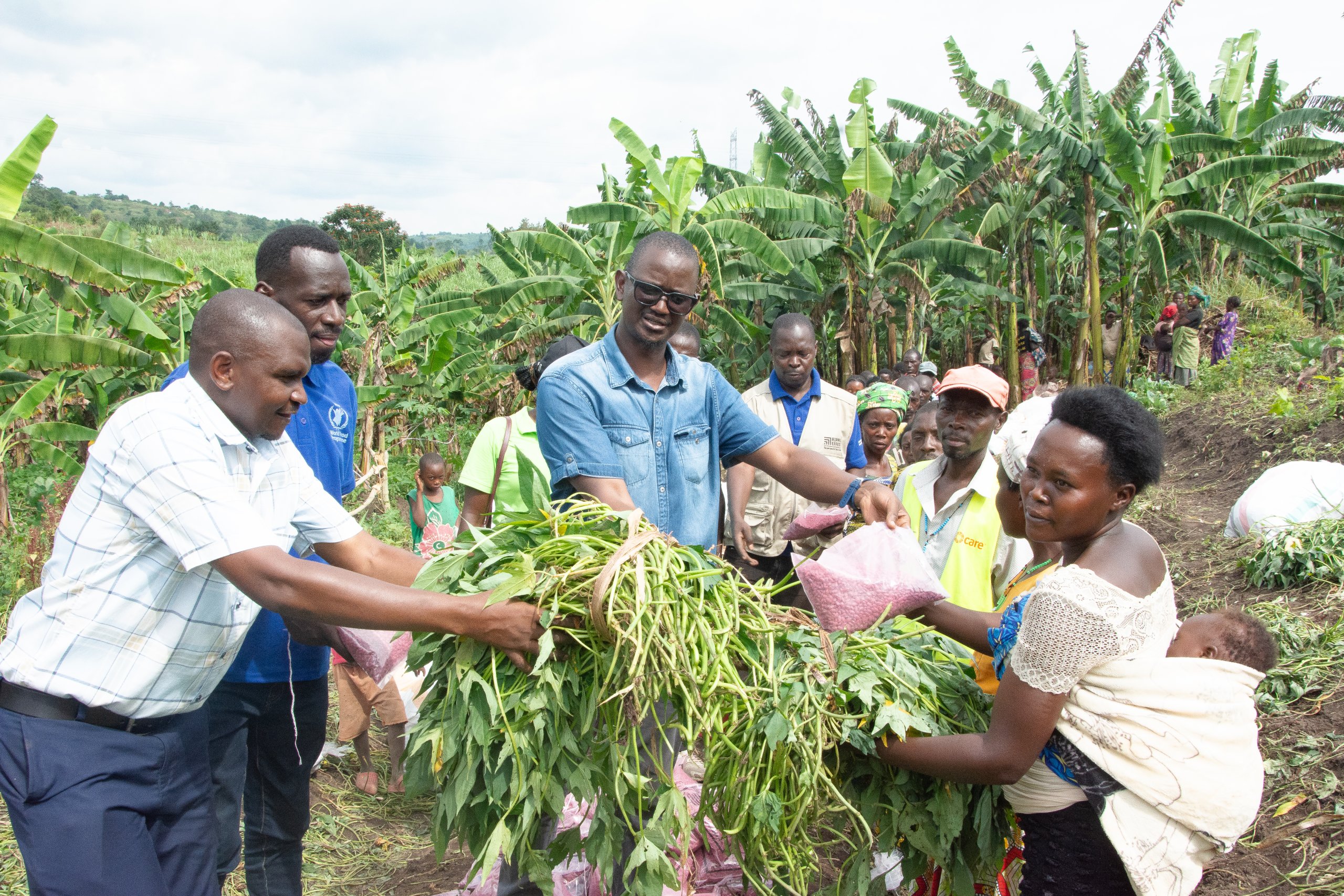
Training Objectives and Overview
Dr. Norman Kwikiriza, Nutrition Scientist from the International Potato Center (CIP), presented the objectives of the training, which included:
- Enhancing participants’ knowledge of the nutritional and health benefits of biofortified crops.
- Equipping farmers with Good Agronomic Practices (GAPs) for sustainable production of OFSP and High Iron Beans.
- Strengthening community-led seed multiplication systems to ensure consistent access to planting materials.
- Promoting improved maternal and child feeding practices using the Healthy Baby Toolkit.
Understanding Orange-Fleshed Sweet Potato (OFSP)
In his presentation titled “What is OFSP and Why It Matters,” Dr. Kwikiriza explained that Orange-Fleshed Sweet Potato (OFSP) is a biofortified variety rich in beta-carotene, a precursor of Vitamin A, which is essential for maintaining good vision, immune function, and overall child development.
He elaborated on the released OFSP varieties, including NASPOT 8 (Kabode) and NASPOT 13 (Kabode Plus), both developed for their high Vitamin A content, adaptability to local conditions, and resistance to drought and common pests.
Dr. Kwikiriza highlighted that consuming just 150 grams of OFSP per day could meet over 100% of the daily Vitamin A requirement for children under five and over 70% for breastfeeding mothers.
“Vitamin A plays a vital role in preventing night blindness, improving immune function, and reducing child mortality rates,” he noted. “For breastfeeding mothers, OFSP enhances the Vitamin A content of breast milk, strengthening both maternal health and infant immunity.”
Good Agronomic Practices (GAPs) for OFSP
During the field session, Dr. Kwikiriza led practical demonstrations on OFSP cultivation, emphasizing:
- Proper land preparation with ridges or mounds to enhance drainage.
- Vine selection from healthy plants to prevent viral infections.
- Spacing of 30 cm between plants and 90 cm between ridges for optimal growth.
- Timely weeding and pest management using environmentally friendly methods.
- Harvesting at 3–4 months, followed by proper curing and storage to retain nutritional value.
He also encouraged farmers to integrate OFSP into local diets in various forms such as porridge, chapati, doughnuts, and baby foods, promoting its acceptability across all age groups.
Training on High Iron Beans by Dr. Immaculate Mugisa (NARO/NaCRRI)
Dr. Immaculate Mugisa, a bean breeder from the National Crops Resources Research Institute (NaCRRI) under NARO, facilitated sessions on biofortified beans, focusing on the NAROBEAN6 variety. She explained that High Iron Beans (HIB) are specially bred to contain higher levels of iron and zinc, essential minerals that prevent anemia and boost immune systems, particularly among women and children.
“Iron is crucial for blood formation and energy metabolism,” Dr. Mugisa told participants. “Consuming iron-rich beans contributes to reducing anemia prevalence, improves concentration among children, and enhances productivity among adults.”
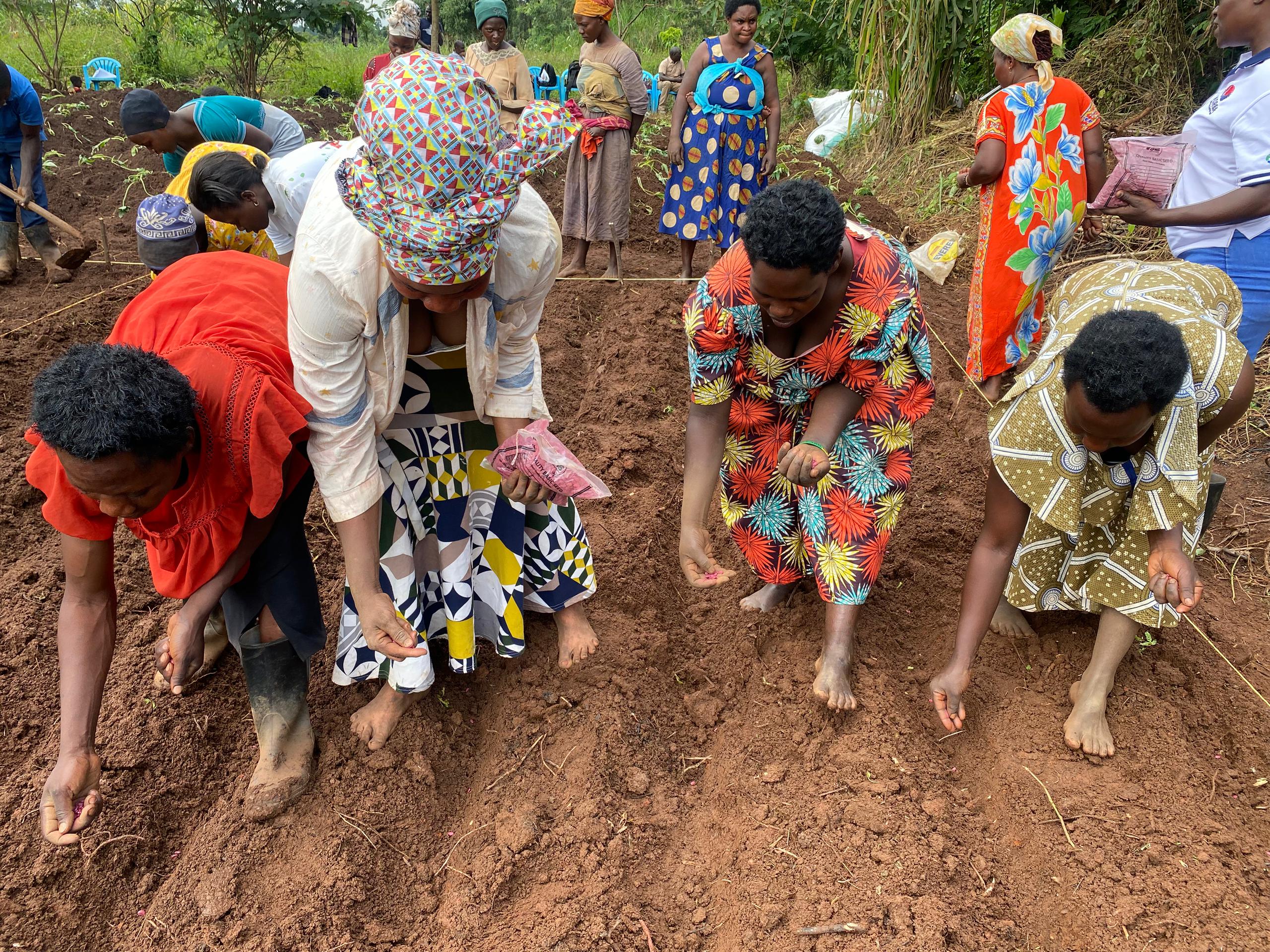
Varieties and GAPs for High Iron Beans
Dr. Mugisa trained farmers on the key Good Agronomic Practices (GAPs) for beans, demonstrating:
- Land preparation with fine tilth to enhance germination.
- Row planting with spacing of 50 cm between rows and 10 cm between plants to allow adequate sunlight and aeration.
- Timely weeding to reduce competition for nutrients.
- Application of organic manure or compost to improve soil fertility.
- Proper harvesting and drying to maintain grain quality.
She emphasized the importance of selecting certified seed and maintaining clean fields to prevent diseases such as angular leaf spot and anthracnose.
Healthy Baby Toolkit Demonstration by Ms. Grace (Makerere University)
Ms. Grace, a nutritionist from the Makerere University School of Health Sciences, led an engaging session on the use of the Healthy Baby Toolkit for complementary child feeding.
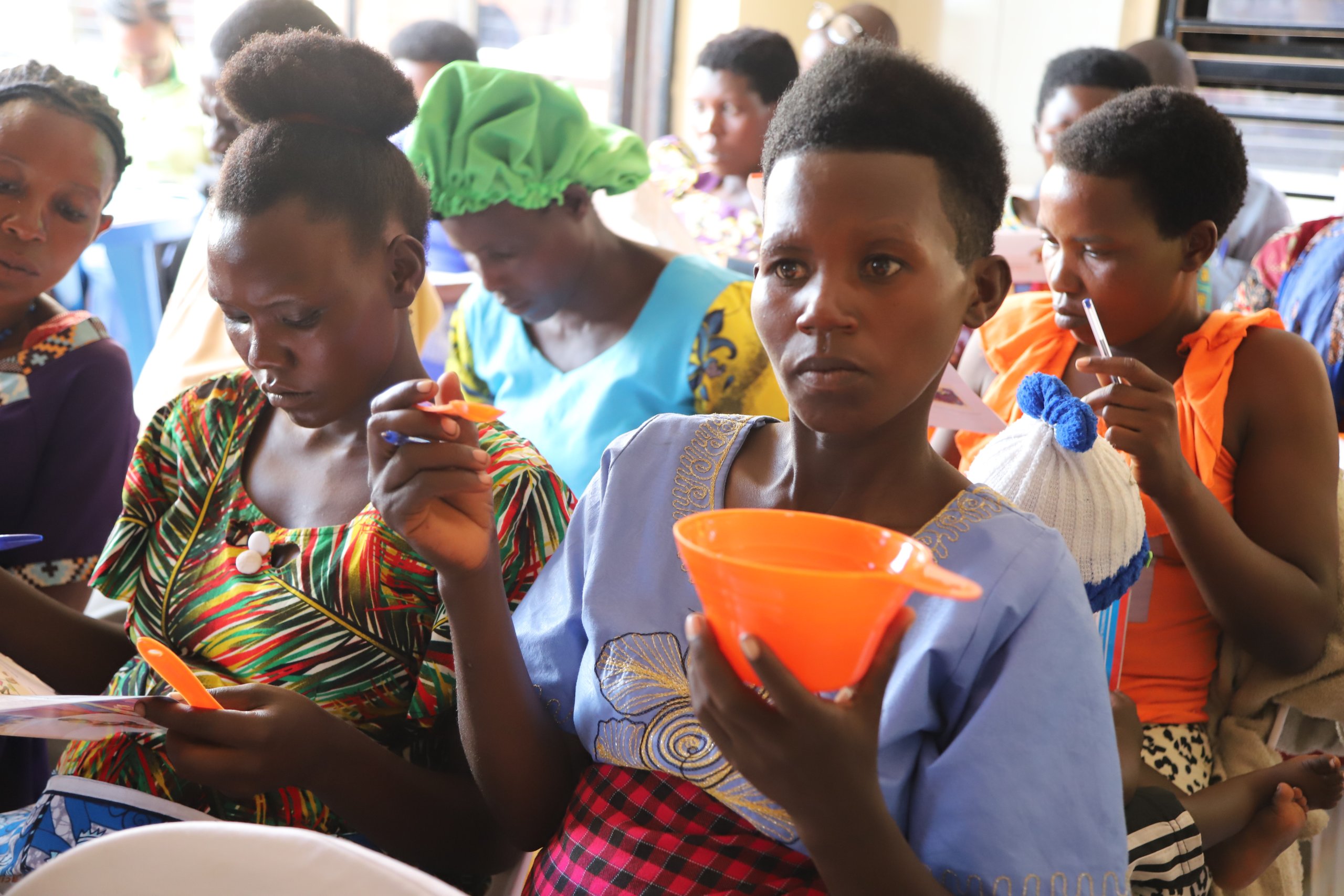
The toolkit, developed as a visual and practical guide, helps mothers plan balanced meals for children aged 6–24 months. It emphasizes the inclusion of biofortified crops like OFSP and High Iron Beans, along with other locally available foods, to ensure adequate micronutrient intake during the critical early years of growth.
“The first 1,000 days of a child’s life from conception to age two are critical for brain development and lifelong health,” Ms. Grace explained. “The Healthy Baby Toolkit empowers mothers to make informed feeding choices that can break the intergenerational cycle of malnutrition.”
Distribution of Planting Materials and Learning Resources
At the end of the training, participants received agricultural inputs and educational materials to facilitate practical application within their communities.
In total:
- 200 kilograms of NAROBEAN6 seeds were distributed to 200 farmers (1 kg per farmer).
- 200 bags of OFSP vines were provided, each containing five bundles of 200 cuttings of NASPOT 8 or NASPOT 13.
- 200 Healthy Baby Toolkits were given to mothers with children aged 6–24 months.
- 200 OFSP brochures were distributed to enhance knowledge dissemination on nutrition and crop management.
The training team also supervised the establishment of demonstration plots across Kyangwali town and refugee host communities within the settlement, which now serve as knowledge hubs farmer education and seed and vine multiplication.
Transforming Refugee Livelihoods through Nutrition-Sensitive Agriculture
The training marked a significant milestone in promoting climate-smart, nutrition-sensitive agriculture in Uganda’s refugee and host communities. By combining research, hands-on learning, and community engagement, ASARECA and its partners strengthened local capacity to fight hidden hunger and improve resilience to climate shocks.
Farmer leaders expressed gratitude for the training, noting that the knowledge gained would improve both their nutrition and livelihoods.
“I now understand that these crops are not just food, but medicine for our families,” said one mother. “We shall continue to grow, eat, and teach others about OFSP and High Iron Beans.”
Through initiatives such as this, ASARECA continues to fulfill its regional mandate of coordinating agricultural research for development, ensuring that innovations reach the most vulnerable communities in Eastern and Central Africa.

